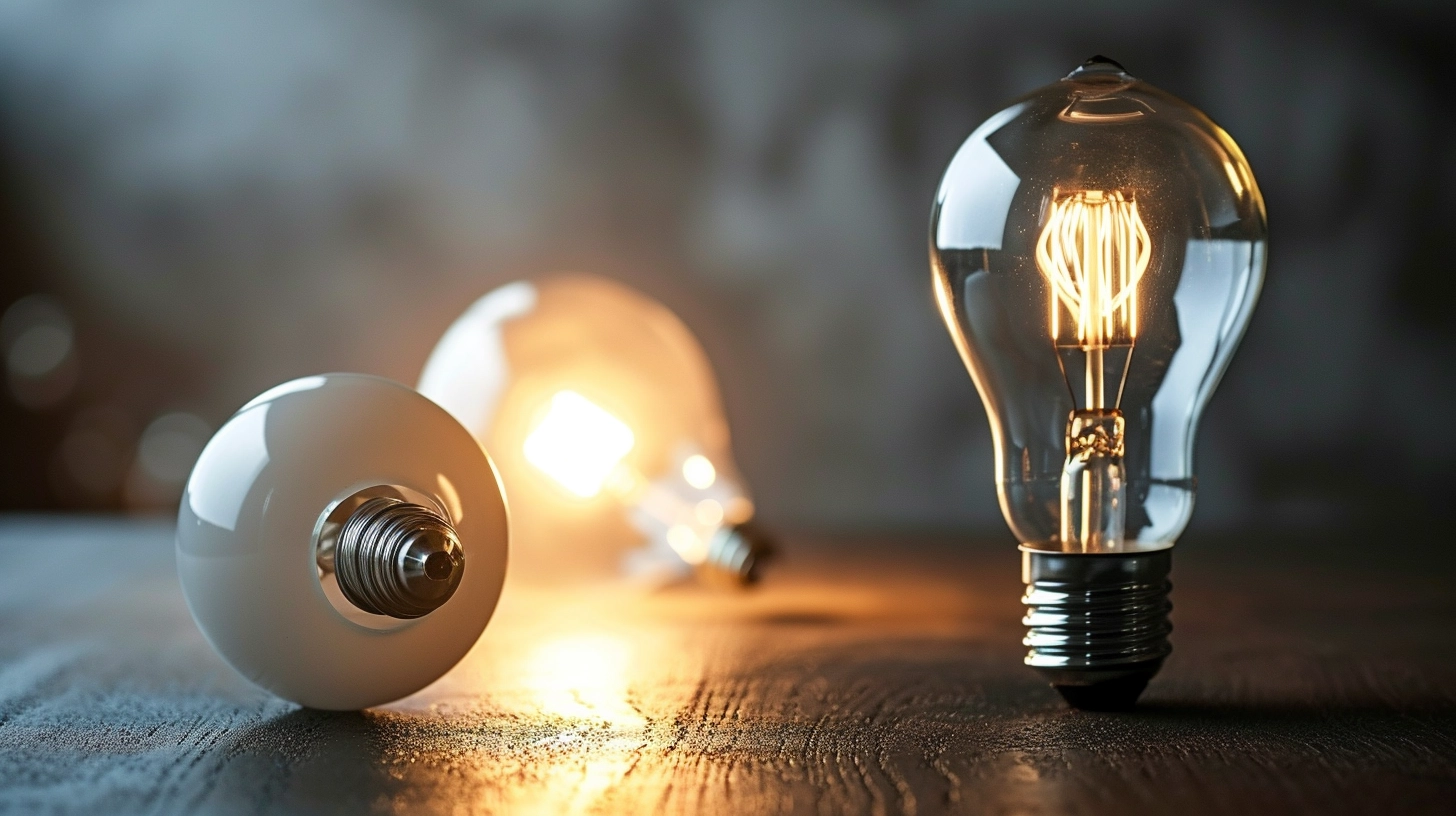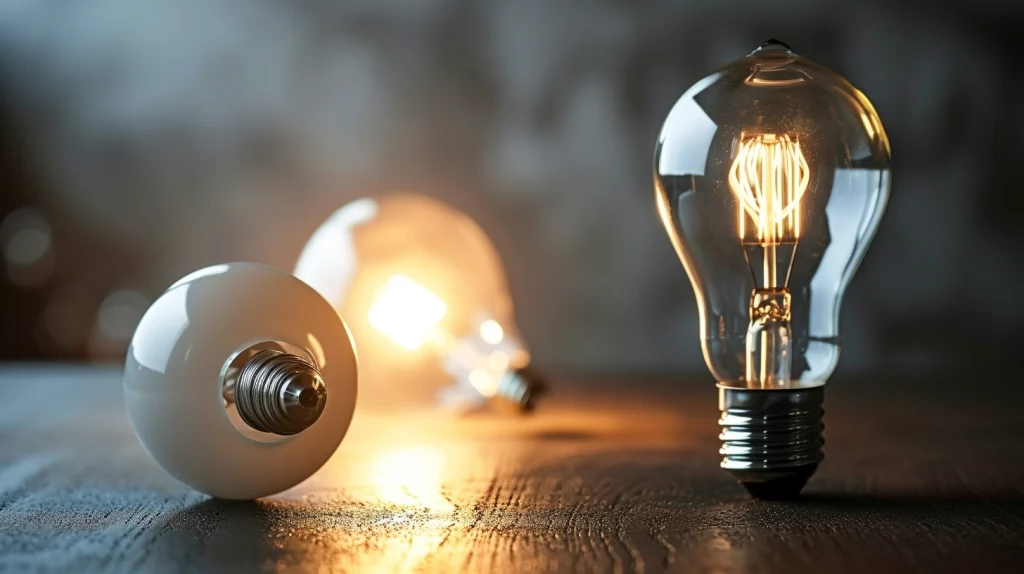

While you may think choosing a light bulb is as simple as picking one from the shelf, it’s a decision that can impact your wallet, home and even the planet.
Yes, that’s right. Opting for energy-efficient light bulbs can save you money on your energy bills and reduce your carbon footprint, contributing to a more sustainable future.
You may wonder, ‘How much can I save?’ or ‘What’s the big deal about a light bulb’s impact on the environment?’
Well, stick around because we’ll shed some light on these questions.
Understanding Energy-Efficient Light Bulbs
To fully harness the benefits of energy-efficient light bulbs, you need to understand the different types available, their energy consumption, and how their brightness is measured. Considering these factors, shedding light on understanding energy-efficient light bulbs becomes crucial.
Several types of light bulbs are available, including incandescent tungsten, halogen, fluorescent (CFL), and LED bulbs. Each type has its energy efficiency. For instance, LED bulbs are the most efficient, consuming less energy than others. They not only provide the same level of brightness as traditional bulbs, but they also last longer, offering energy-saving benefits.
Furthermore, the brightness of these bulbs is measured in lumens, not watts. The higher the lumens, the brighter the light, making LED bulbs a cost-effective choice for indoor lighting.
Switching to energy-efficient light bulbs isn’t only about reducing your energy bills. It’s also about making a conscious choice for a greener environment. Remember, every small step towards energy efficiency helps reduce greenhouse gas emissions. So, make the switch today and enjoy the benefits of energy saving.
Comparing Types of Energy-Efficient Bulbs
When choosing your home’s lighting, it’s essential to compare the different types of energy-efficient bulbs—LED, CFL, and incandescent—to understand their contributions to energy savings and the environment.
LED bulbs are top-tier performers in energy efficiency. They consume less power, produce less heat, and have an impressive lifespan of up to 100,000 hours. So, if you’re looking for long-term savings on your electricity bill, LED bulbs are an ideal choice.
On the other hand, while not as efficient as LED bulbs, CFL bulbs still offer significant energy savings compared to traditional incandescent bulbs. They’re more affordable upfront and can last up to 8,000 hours, making them a cost-effective alternative.
While not typically classified as energy efficient, incandescent bulbs have improved in recent years, and some types can indeed be more efficient than their predecessors. However, they still need to catch up in the long run due to their shorter lifespans and higher energy use.
In short, when comparing energy-efficient bulbs, LED and CFL bulbs offer the best balance between energy savings, cost-effectiveness, and environmental impact.
Cost and Energy Savings Analysis
Analyzing the cost and energy savings of different light bulbs reveals that while LED bulbs might cost more upfront, they’re a solid investment that pays off in the long run due to their lower energy consumption and longer lifespan. This cost and energy savings analysis reveals that their durability and efficiency offset the initial price of LEDs.
Energy-efficient bulbs, specifically LEDs, illuminate your home significantly longer than traditional bulbs. This longevity can save money by reducing the frequency of replacements. Additionally, LEDs use less energy, leading to substantial energy savings on your electricity bills over time.
Consider CFL bulbs, which might cost less initially but require more frequent replacements. This increases the total expenditure over time, making LEDs a wiser choice economically. The goal is to reduce your energy usage and expenses. Switching to energy-efficient bulbs is a practical first step. You’re making a greener choice by reducing carbon emissions and saving money in the long run.
Therefore, switching to energy-efficient bulbs is a financially savvy and environmentally friendly move.
Environmental Impact of Light Bulbs
In the quest for a greener planet, switching to energy-efficient light bulbs is a significant step, as they drastically reduce energy consumption and carbon emissions. According to the Environmental Protection Agency, these bulbs can significantly reduce your carbon footprint. That’s because they use less energy, reducing the amount of fossil fuels burned at power plants and decreasing greenhouse gas emissions harmful to the environment.
In addition, energy-efficient bulbs last up to 12 times longer than traditional incandescent ones. This means less waste ends up in landfills, contributing to conserving our natural resources. It’s a small change that can make a big difference.
Tips for Choosing the Right Bulb
Choosing the correct light bulb is crucial to saving electricity bills and contributing to a greener planet. Energy-efficient lighting is the way to go. Energy-saving bulbs, mainly LED types, can significantly reduce power consumption and carbon footprint.
When choosing the correct bulb, consider its luminosity and energy usage. Don’t confuse lumens and watts. Remember that lumens measure brightness, while watts determine energy consumption. The higher the lumens and lower the watts, the better.
Always check for the ENERGY STAR® seal on the packaging. This seal signifies that the bulb meets stringent energy efficiency guidelines. While LED bulb types might seem pricier upfront, they’re more cost-effective in the long run due to their extended lifespan and lower energy usage.
Lastly, think about the color and warmth you want in your space. Bulbs emit different colors and degrees of warmth, so choose the one that suits your needs and aesthetic preferences.
These tips for choosing the correct bulb will help you make a smart, energy-efficient choice. Embrace these practices, and you’ll not only save money but also make a positive impact on our planet.